Hi, what do you want to do?
Other
Ksu: Point of View: First Person Narrator
This tutorial surveys the uses and limitations of first-person narration in literature. CCSS.ELA-Literacy.CCRA.R.9
Ohio University
Ohio.edu: Point of View and Narrative Voice
This is an article defining point of view, explaining the types of point of view, and discussing voice and tone. It was originally published at http://teenwriting.about.com/library/weekly/aa111102e.htm.
Texas Education Agency
Texas Gateway: Teaching: Prewriting and Planning Personal Narratives
This instructional activity focuses on prewriting and planning a personal narrative. The information can be used in all types of writing. It discusses brainstorming ideas, narrowing the focus, and developing the central idea. W.9-10.5...
Other
Thoughtful Learning: ccss.ela literacy.w.7.3.a
Pick and choose from these lessons and units that focus on narrative writing. Specifically, how to establish a context and point of view, introduce characters, and organize an event sequence.
Texas Education Agency
Texas Gateway: Analyze Point of View in Literary Texts/fiction
[Accessible by TX Educators. Free Registration/Login Required] In this lesson, you will learn to identify the primary points of view used in fiction and weigh the advantages and disadvantages of each.
Texas Education Agency
Texas Gateway: Organization Appropriate to Purpose, Audience, and Context
[Accessible by TX Educators. Free Registration/Login Required] This lesson will teach you how to write and organize an essay so that it addresses different purposes, different audiences, and different contexts.
Other
Kim's Korner: Patterns of Organization
This resource from Kim's Korner for Teacher Talk defines various patterns of text organization and provides a brief essay example of each pattern.
Other
Friends University: Patterns of Organization and Their Clue Words [Pdf]
Chart lists patterns of organization with their corresponding clue words.
Teachers.net
Teachers.net: Flip Books and Story Boards
While this instructional activity is designed to aid in communications technology, the concept and procedure of the instructional activity can be readily used in any class. The main concept taught is organization and developing...
Other
Tidewater Community College: Writing Center: Organizing Paragraphs and Essays
This page gives a quick, but thorough look at a few good ways to organize a piece of writing.
Alabama Learning Exchange
Alex: Narrative Writing: The Autobiographical Incident
After organizing their thoughts using a graphic organizer, students write a narrative essay which relates an autobiographical incident. Students present their essays in a slideshow which allows their classmates to practice predicting an...
Alabama Learning Exchange
Alex: How Silk Is Made
This lesson focuses on sequencing using a narrative passage and Makes Sense Guided Reading Strategies.
Alabama Learning Exchange
Alex: Taking Apart and Reconstructing Stories
This lesson is designed as a project-based unit plan that will take young scholars through the narrative process from deconstruction to construction. After initial discussion, students will use the Interactive Story Map feature at Read...
PBS
Pbs Learning Media: Interpreting Characters, Setting, Plot, & Theme: Triangle...
Students will view video documenting the real-life story of the Triangle Shirtwaist Factory fire in 1911. Students will complete a story elements graphic organizer. This organizer will help them distinguish various story elements and put...
University of South Florida
Fcat Express: Chronological Order Worksheet [Pdf]
This Chronological Order graphic organizer allows students to order events from text they are reading.
ACT360 Media
Sequence Paragraphs
Here are a few brief hints and key words to use when organizing a piece of writing by sequence or time.
Writing Fix
Writing Fix: Serendipitous Personification for Stories and Descriptions
Students will use this writing prompt generator to create a personification story or description.
Writing Fix
Writing Fix: Left Brained Writing Prompt: Mini Worshop: People to Write About
In this mini-workshop, students are provided step-by-step instructions for writing about important people in their lives that they have not yet written about. Click the instructions button when you are ready to begin.
Blackdog Media
Classic Reader: "The Master of the 'Chrysolite'" by G. B. O'halloran
Text of the short story "The Master of the 'Chrysolite'" by G. B. O'Halloran. (Free site registration offers some additional features, e.g., the ability to insert annotations.)
Quia
Quia: Rags to Riches Author's Tone and Point of View
Answer questions about author's purpose, tone, and point of view in this Rags to Riches style game.
University of Victoria (Canada)
The U Vic Writer's Guide: Literary Term: Protagonist
Clear and concise, this University of Victoria Writer's Guide definition of "protagonist" covers the basics.
Houghton Mifflin Harcourt
Holt, Rinehart and Winston: Elements of Literature: Determining Methods of Characterization [Pdf]
A brief organizer in which students can document how a character in literature is presented, through either direct or indirect characterization. Provides labels, examples, and sections for textual support.
Sophia Learning
Sophia: Writing for an Audience: Lesson 3
A slideshow introducing the concept of writing for an audience. It is 3 of 3 in the series titled "Writing for an Audience."
Sophia Learning
Sophia: Introductions: Lesson 4
This lesson introduces introductions. It is 4 of 5 in the series titled "Introductions."





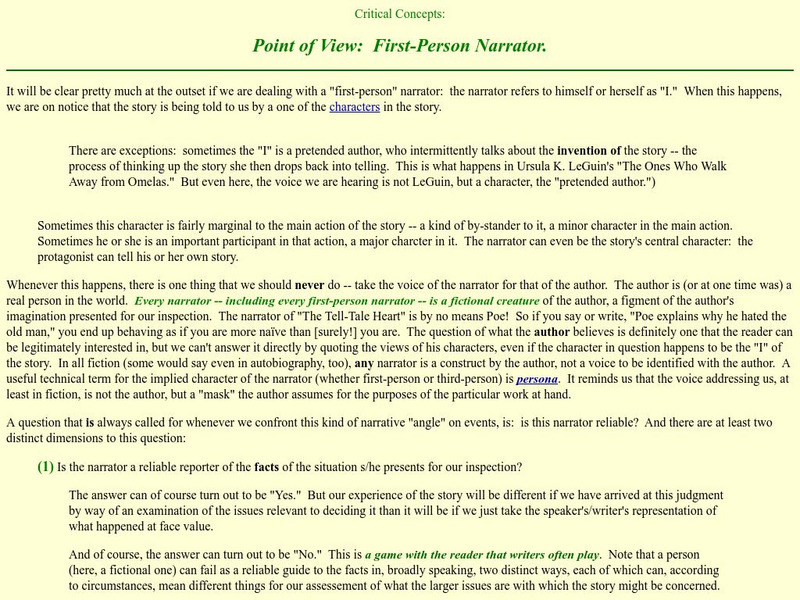

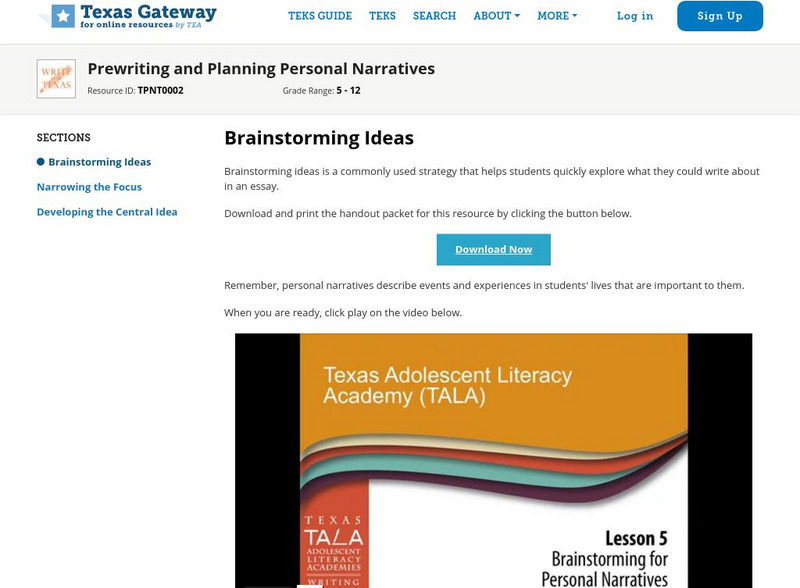
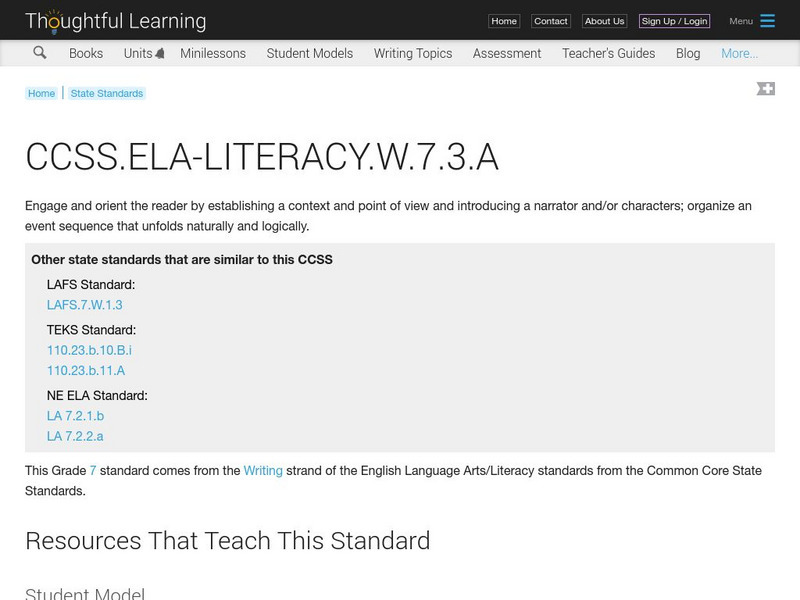
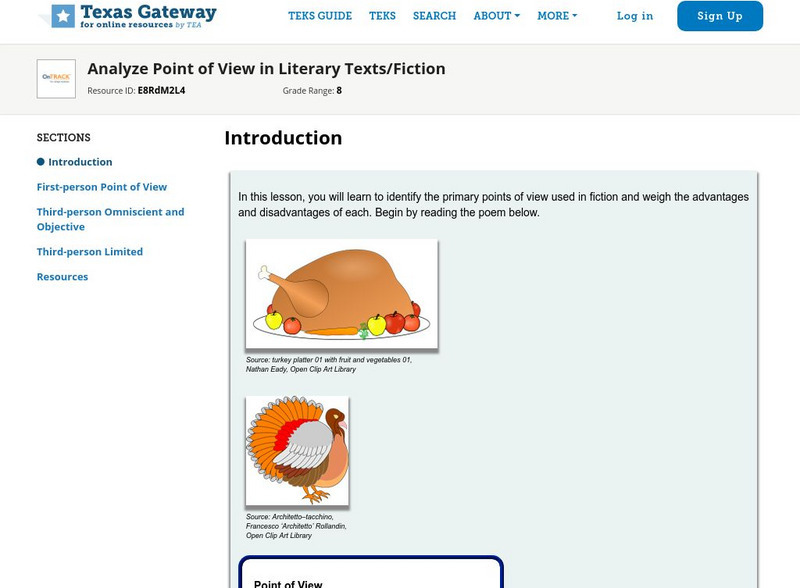
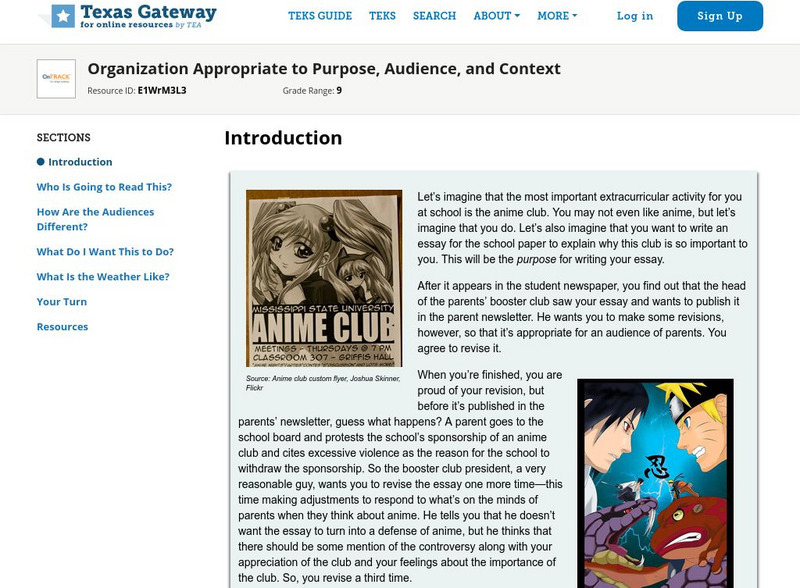
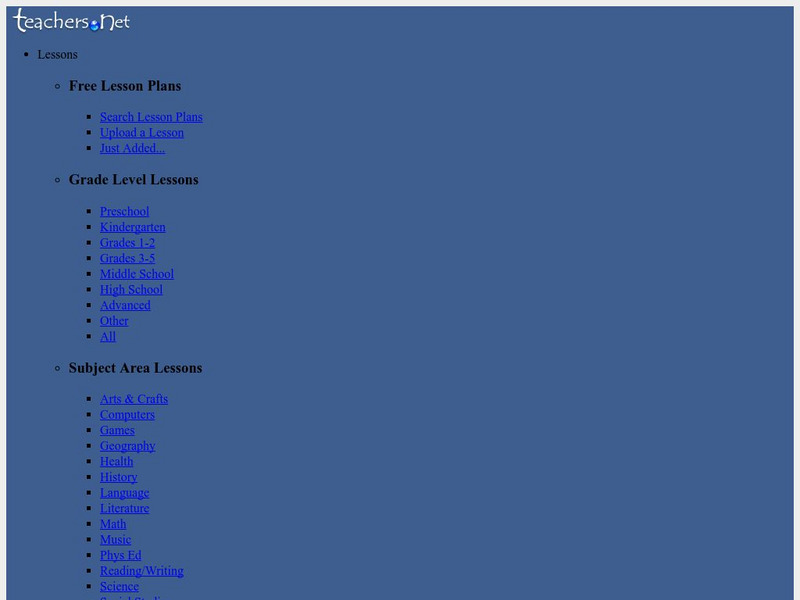





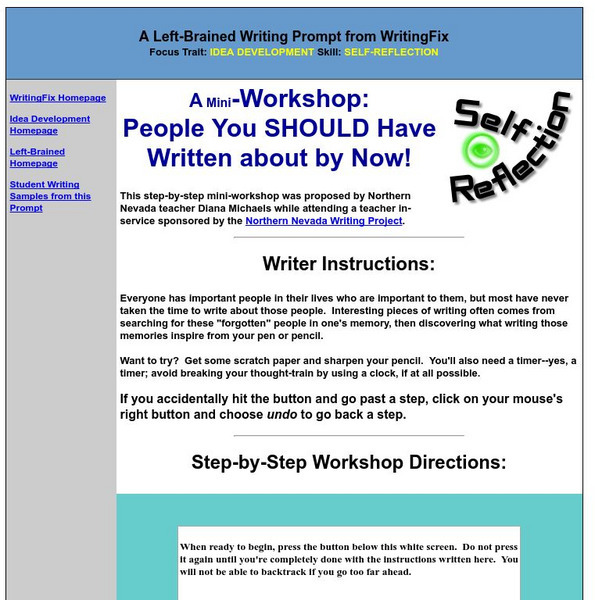

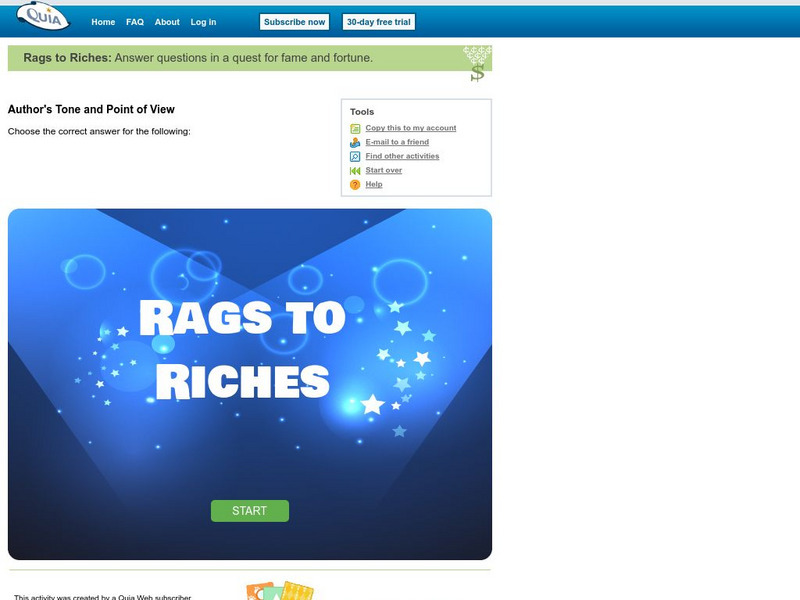
![Holt, Rinehart and Winston: Elements of Literature: Determining Methods of Characterization [Pdf] Graphic Holt, Rinehart and Winston: Elements of Literature: Determining Methods of Characterization [Pdf] Graphic](http://lessonplanet.com/content/resources/thumbnails/410109/large/bwluav9tywdpy2symdiwmduymc0ymjy4mc0xz3pvamf3lmpwzw.jpg?1589985471)

